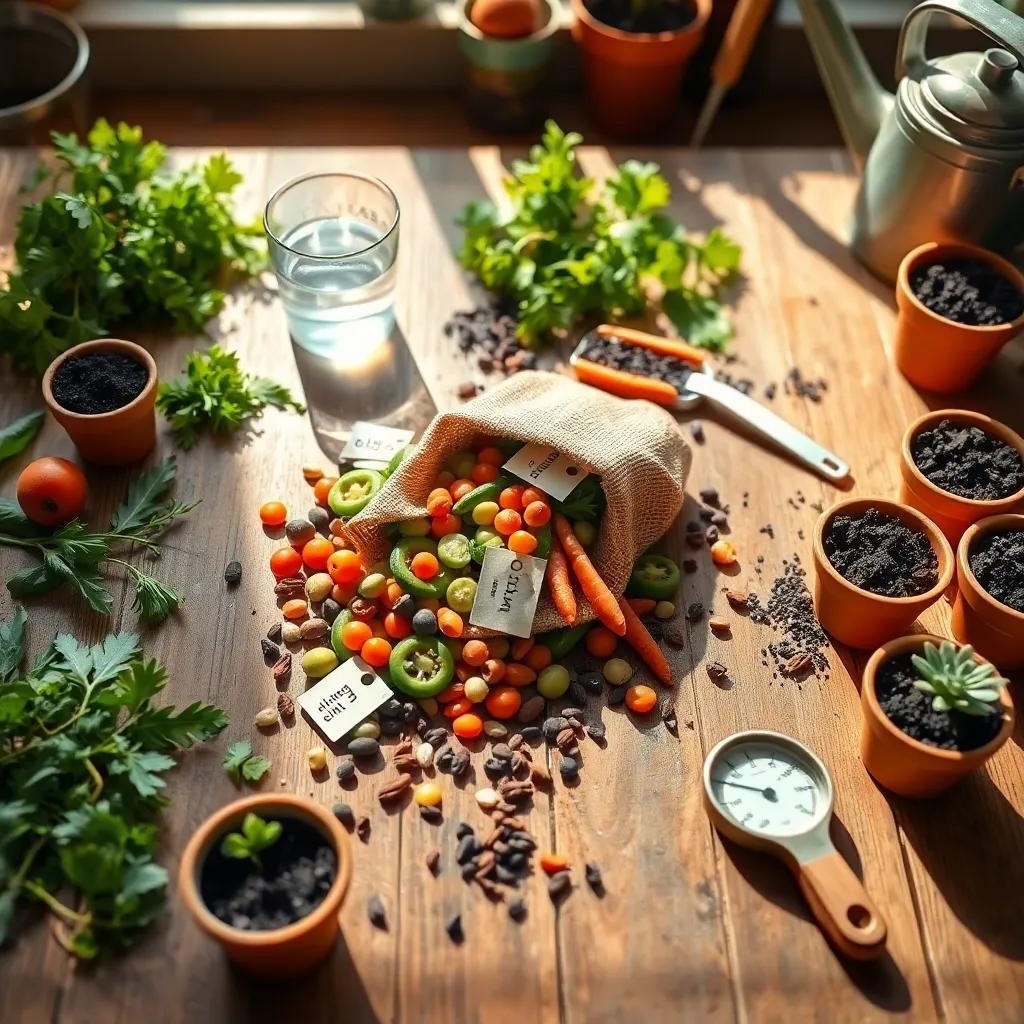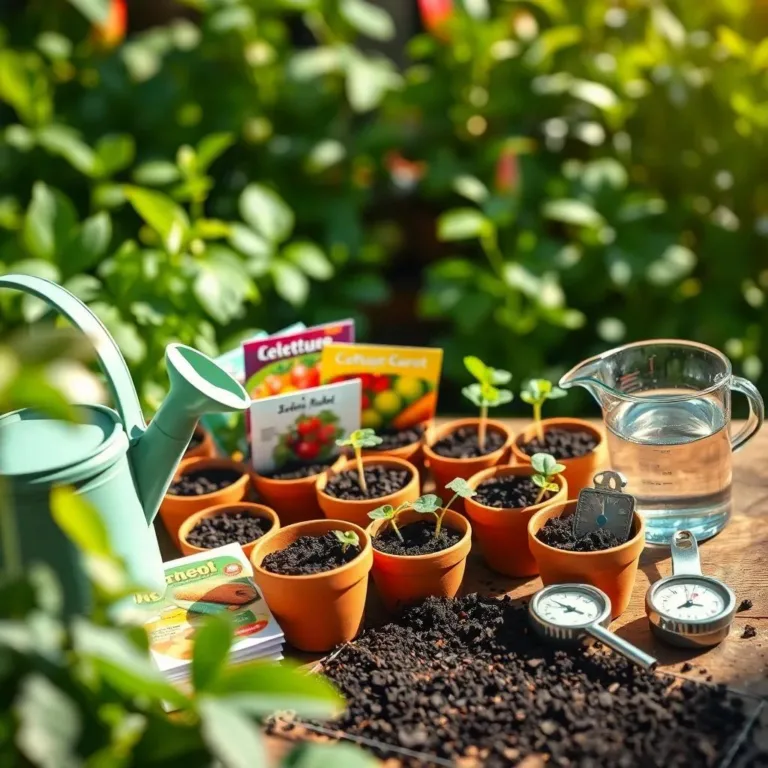Have you ever wondered what really makes seeds sprout into beautiful plants? In this guide, I’ll share some easy tips and tricks to help you understand the science of seed germination! Let’s uncover the secrets together, and get ready to watch your garden come to life!
Factors Influencing Seed Germination Time
When we think about planting seeds, it’s exciting to imagine what might grow! But have you ever wondered what really makes those little seeds sprout? Here’s the scoop: seed germination is influenced by a variety of factors. Understanding these can help us coax those seeds into action!
- Water: Seeds need water—it’s like their morning coffee! Adequate moisture helps seeds absorb nutrients and kickstart the germination process. But be careful! Too much water can turn your seeds into mush. Find that sweet spot!
- Temperature: Every seed has a preferred temperature range. Some seeds love the warmth, while others thrive in cooler conditions. For example, tomato seeds like it warm, around 70°F to 80°F, while some lettuce seeds prefer a chillier 60°F. Keeping an eye on the temperature can make a big difference!
- Light: This one’s a bit tricky. Some seeds need light to germinate, while others prefer darkness. For instance, marigold seeds love the light, but carrot seeds want to be tucked away in the dark soil. Knowing your seeds’ preferences can help them sprout faster!
- Oxygen: Just like us, seeds need oxygen! They use it to break down their stored food and grow. If the soil is too compact or waterlogged, seeds can struggle to get the air they need. So, let’s keep that soil well-aerated!
- Seed Quality: Always buy high-quality seeds! Old or damaged seeds might not sprout at all. Check for any visible signs of damage, and choose seeds from trusted sources. Good seeds are the foundation of a successful garden!
By understanding these key factors, I can create the perfect conditions for my seeds to sprout. It’s like setting the stage for a show—everything needs to be just right!
Common Seeds and Their Germination Durations
Now, let’s talk about how long different seeds take to sprout! This can be a game changer when planning my garden. Here’s a handy list of common seeds and their typical germination times:
- Lettuce Seeds: 7 to 10 days
- Tomato Seeds: 7 to 14 days
- Carrot Seeds: 14 to 21 days
- Bean Seeds: 7 to 10 days
- Cucumber Seeds: 7 to 10 days
- Zinnia Seeds: 10 to 14 days
Isn’t it interesting how some seeds sprout so quickly while others take their time? For example, lettuce seeds are the speedy ones! I can have a fresh salad in no time if I plant those. But carrot seeds? They’re more laid-back. I might have to wait a bit longer for those tasty carrots!
Remember, the germination time can vary based on conditions. If it’s too cold or too dry, those seeds might take longer to sprout. Keeping the soil consistently moist and at the right temperature can help me speed things up.
By being aware of these germination durations, I can set my gardening expectations and plan my planting schedule accordingly. It’s all about patience and understanding what our little green friends need to grow! Let’s get those seeds sprouting and watch our gardens flourish!

Environmental Conditions Affecting Seed Sprouting
When it comes to seeds sprouting, environmental conditions play a big role! You might have the best seeds around, but if the conditions aren’t right, those little guys may take their sweet time to wake up. So, what should I keep an eye on? Let’s break it down!
- Temperature: Each seed has its own ideal temperature for germination. This is like the Goldilocks zone—not too hot, not too cold. For example, seeds like tomatoes thrive at around 70°F to 80°F, while lettuce prefers cooler weather. Using a simple thermometer in the soil can help me keep track!
- Moisture: Seeds drink up water like I drink lemonade on a sunny day! They need just the right amount. If the soil is too dry, they might not sprout. Too wet? They could rot. Finding that jackpot of moisture is key. I often mist the soil lightly to keep it just right!
- Light: Light affects some seeds differently than others. Some love the sunshine and need it to germinate, while others want to hide in the dark. For instance, marigold seeds bask in light, while carrot seeds prefer being covered. Knowing what each seed wants can help me plant them correctly!
- Air and Oxygen: Just like us, seeds need oxygen! No air? No growth! I always make sure the soil is loose and not compacted, so air can flow freely around my seeds.
By mastering these environmental factors, I can set the stage for my seeds to sprout and thrive! It’s all about creating that perfect little home for them.
Techniques for Faster Seed Germination
I don’t know about you, but I can’t wait to see my seeds sprout! Thankfully, there are some neat techniques I use to get them growing a little faster. Here are my favorites:
- Pre-soaking Seeds: A little soak goes a long way! Soaking seeds in water for a few hours or overnight softens their coat. This helps them absorb moisture quickly and speeds up germination. Just make sure to follow guidelines for each seed type!
- Using Seed Starting Mix: Instead of regular soil, I opt for a seed starting mix. This lighter, well-draining mix helps create the ideal environment for growing. It’s like giving my seeds a cozy blanket to snuggle into!
- Temperature Control: Keeping the right temperature can be a game-changer! I like to use heat mats for seeds that love warmth. This little boost can make a big difference in how quickly they sprout.
- Consistent Moisture: I check the moisture levels regularly, making sure the soil stays damp but not soggy. Covering the pots with plastic wrap can create a mini greenhouse effect, trapping moisture and warmth.
- Proper Seed Depth: Planting seeds at the right depth matters! I usually plant seeds about two to three times as deep as their size. This helps them get the light or darkness they crave for sprouting.
By using these techniques, I can give my seeds the best chance to sprout quickly. It’s like a little gardening magic that gets the plants growing in no time!
Understanding Seed Quality and Its Impact on Germination
Now, let’s talk about something that makes a huge difference in seed germination: seed quality! Not all seeds are created equal, and understanding what makes a good seed can save me time and frustration.
- Freshness: Fresh seeds are more likely to sprout than old ones. When I buy seeds, I check the packaging date. I prefer seeds that are packed for the current season. If they’re too old, they might be duds!
- Storage Conditions: Just like I like a comfy home, seeds need good storage, too! Seeds should be kept in a cool, dry, and dark place. Humidity and heat can spoil them. I often store my seeds in airtight containers to keep them fresh.
- Seed Variety: Different varieties of the same plant can have varying germination rates. For instance, heirloom seeds might take longer to sprout than hybrid varieties. Knowing the differences can help me manage my expectations.
- Source: Always choose seeds from reputable suppliers! Quality seed companies often provide information about germination rates and help ensure I’m starting off strong. Plus, I love supporting local growers!
- Appearance: Lastly, I check the seeds themselves. Healthy seeds should look plump and undamaged, not shriveled or moldy. If they look bad, I won’t waste time planting them!
By focusing on seed quality, I can boost my chances of successful germination. It’s all about starting with the best materials to cultivate a thriving garden! Happy planting!

